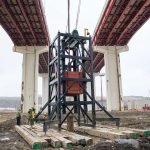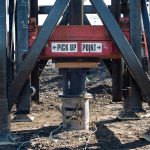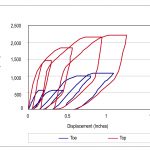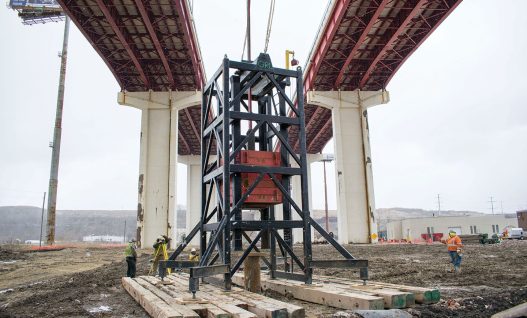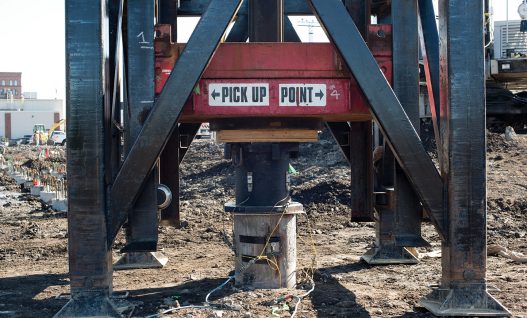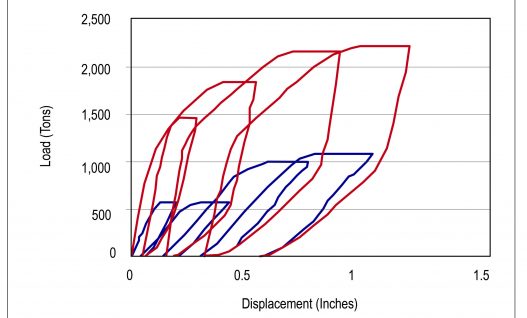Dynamic Load Testing – Drilled Shafts and ACIP/CFA Piles
Performing and Evaluating Dynamic Load Testing
Dynamic Load Testing is a fast, reliable and cost effective method of evaluating foundation bearing capacity. GRL can perform Dynamic Load Testing on driven piles, drilled shafts, auger-cast piles, micropiles, helical piles, and other cast in place foundations. It is often possible to conduct several dynamic load tests in a single day. In addition to bearing capacity, Dynamic Load Testing provides information on resistance distribution (shaft resistance and end bearing) and evaluates the shape and integrity of the foundation element.
The Dynamic Load Test involves a substantial ram mass that impacts the top of the foundation and causes it to experience a small permanent set. Prior to the test, GRL recommends an adequate hammer or drop weight. If neither is available, GRL supplies one of its APPLE Load Testing Systems.
Accelerometers and strain transducers attached to the foundation measure force and velocity as the drop weight hits it. Instead of strain transducers, GRL may also use a force transducer, which speeds up the test and in certain cases may yield more accurate force measurements. GRL analyzes data in real time with the Pile Driving Analyzer® (PDA) dynamic testing system. Data is further analyzed with the CAPWAP® software. GRL engineers furnish a detailed report for each Dynamic Load Testing project that includes a simulated static load test in the form of a calculated load-set curve.
Dynamic Load Tests are standardized by ASTM D4945 Standard Test Method for High-Strain Dynamic Testing of Piles. The test may also be configured to meet the requirements of the Rapid Load Test standard ASTM D7383 provided an adequate ram is available.

